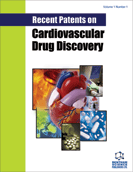Abstract
β-adrenergic blocking agents have been in use for nearly 40 years. β-blockers have been more thoroughly studied in the past twenty years as they have become commonly prescribed to heart failure patients. The class of β-blockers has grown considerably and has many pharmaceutical applications in patients with heart failure. Carvedilol has been the most effective beta-blocker in the treatment of the systolic heart failure. Carvedilol is a non-selective β- and α-blocker enantiomer with antioxidant effects that are attributed to its carbazole moiety. Carvedilol is taken twice daily because it is extensively metabolized and therefore loses its effectiveness due to a short half-life. Recently a long acting carvedilol has become available, as Coreg CR. Coreg CR is available for once-a-day administration as controlled-release oral capsules containing 10, 20, 40, or 80 mg carvedilol phosphate. The subject of the current report is to design a new structural analog of carvedilol that incorporates a protecting group such as a fluorine atom at position 8 of the carbazole ring for the purpose of blocking a critical metabolic pathway thus increasing its half life. This will follow discussion regarding current carvedilol patents. We believe that carvedilol activity will remain unchanged. The synthesis of 8-Fluoro-1, 2, 3, 9- tetrahydro-4H-carbazol-4-one, a key synthetic intermediate of the designed carvedilol analog, was carried out and successfully characterized.
Keywords: Acute coronary syndrome, β-blocker, carvedilol, Coreg, Coreg CR, heart failure, digitalis glycosides, long-acting metoprolol, Beta blockage, Antioxidant Effect
 6
6


